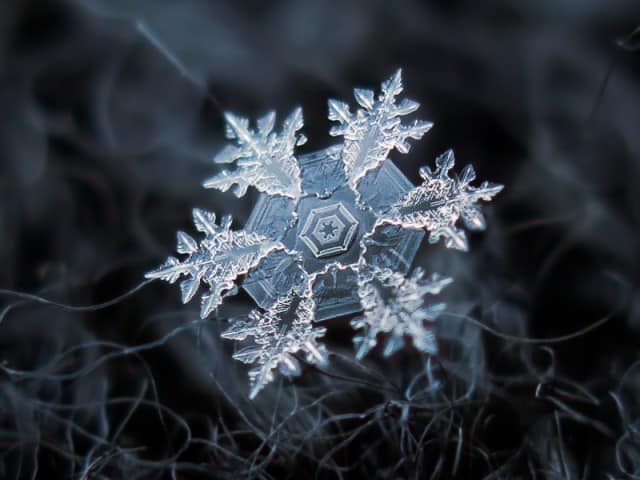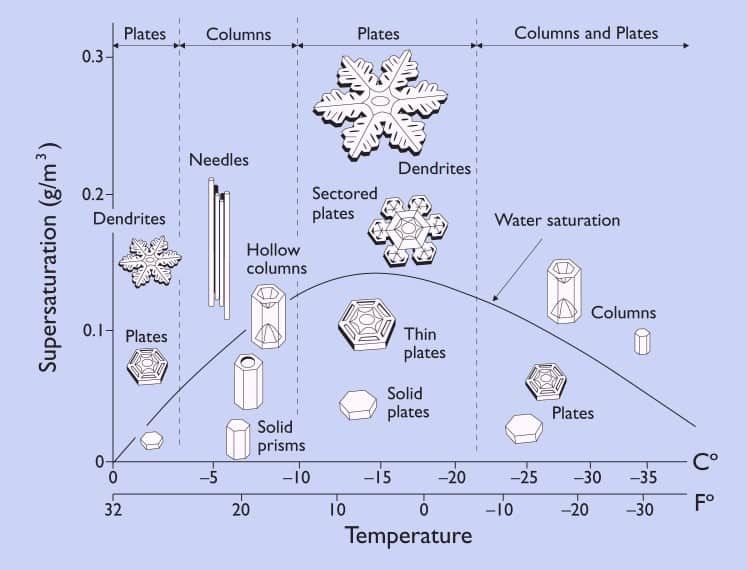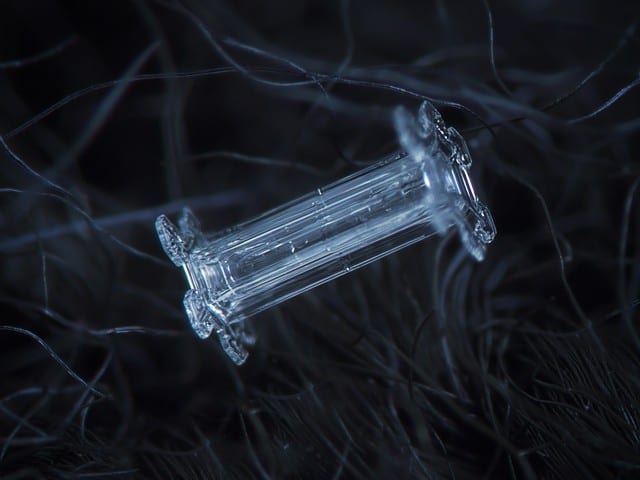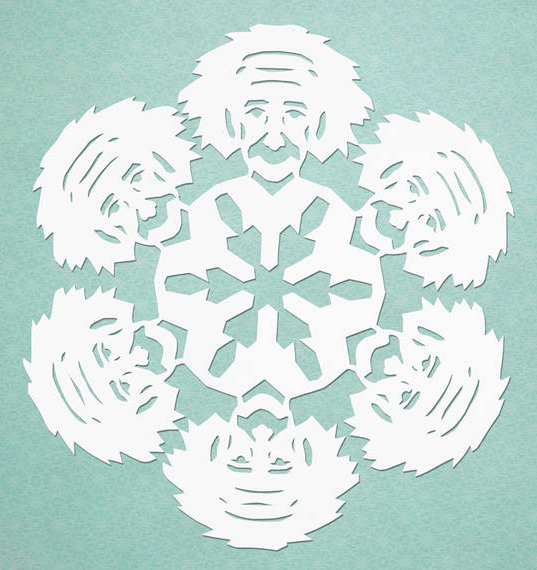You’ve probably ever observed snowflakes. Even with the naked eye you can notice that none of them ever repeats another. In one cubic meter of snow there are approximately 350 million snowflakes, and each of them is unique. How’s that possible? To answer that question let’s consider the physics of snowflake formation. It’s interesting, that you can not have a pentagonal or heptagonal snowflake, they all have strictly hexagonal shape.
The process of snowflake formation stands for crystal sublimation from gas phase omitting the liquidity. From the moment of first crystal formation, the growth of each other portion of water molecules happens in a random way. The thing is, the sublimation process requires nuclei of sublimation which are microaerosols contained in the air, because crystals cannot exist on the surface of another gases, but only on “solid surface”. Micro suspension held in the air with the help of turbulent vortex (of dust, smoke, microbes and bacteria, etc.) is the basis for initial water crystal growth.

Since every particle of microaerosol is irregular in shape, the crystal growth will be chaotic. Thus, from the very beginning, the structure of growing crystals repeats the form of this surface. This is why we can’t meet two similar snowflakes, but it is possible to see polycrystal hexagonal structures of high complexity.

Snowflakes driven by wind and turbulence come to different parts of the cloud which are in their turn different in water vapor saturation. Hence, the process of growth is a number of unbalanced jumps. As a result, shape of a crystal along the beam varies in every snowflake.
Of course, if microaerosol, on which sublimation process goes, would have been exactly of the same shape (which never happen in nature), snowflake grown on their base would be perfect copy of each other.
However, as microaerosols are all unique, we can observe all this stunning variety of whimsical snowflakes.

Basically, no one can prove there are no two completely identical snowflakes. There are lots of snowflakes, yet is their ever possible set of shapes finite? If humans cannot count all possible combinations of temperature and other conditions resulting in vast variety of shapes, then maybe computer can? As Dr. Kenneth Libbrecht, a physics professor at Caltech, claims, the number of possible snowflakes is “pretty much infinite” and that would be quite hard and thankless task.

Christmas is a couple of days afar, and it’s a perfect time to think of holiday decor. Real snowflakes cannot stand warm turning into water immediately, but you can create paper snowflakes to decorate your house. Consider, for example, these physicist-dedicated creative snowflake ideas.

Do you think Albert Einstein snowflake is a bit over the top? Implement your own design! Use online snowflake makers, try this or this, for example. Save your creations and share with friends. Or just grab a pair of scissors and enough paper and start it out. Alike their snow originals, paper snowflakes suggest lots and lots of designs, just turn on your imagination!






Great explanation and info, thanks! enjoyed snowflake constructors too